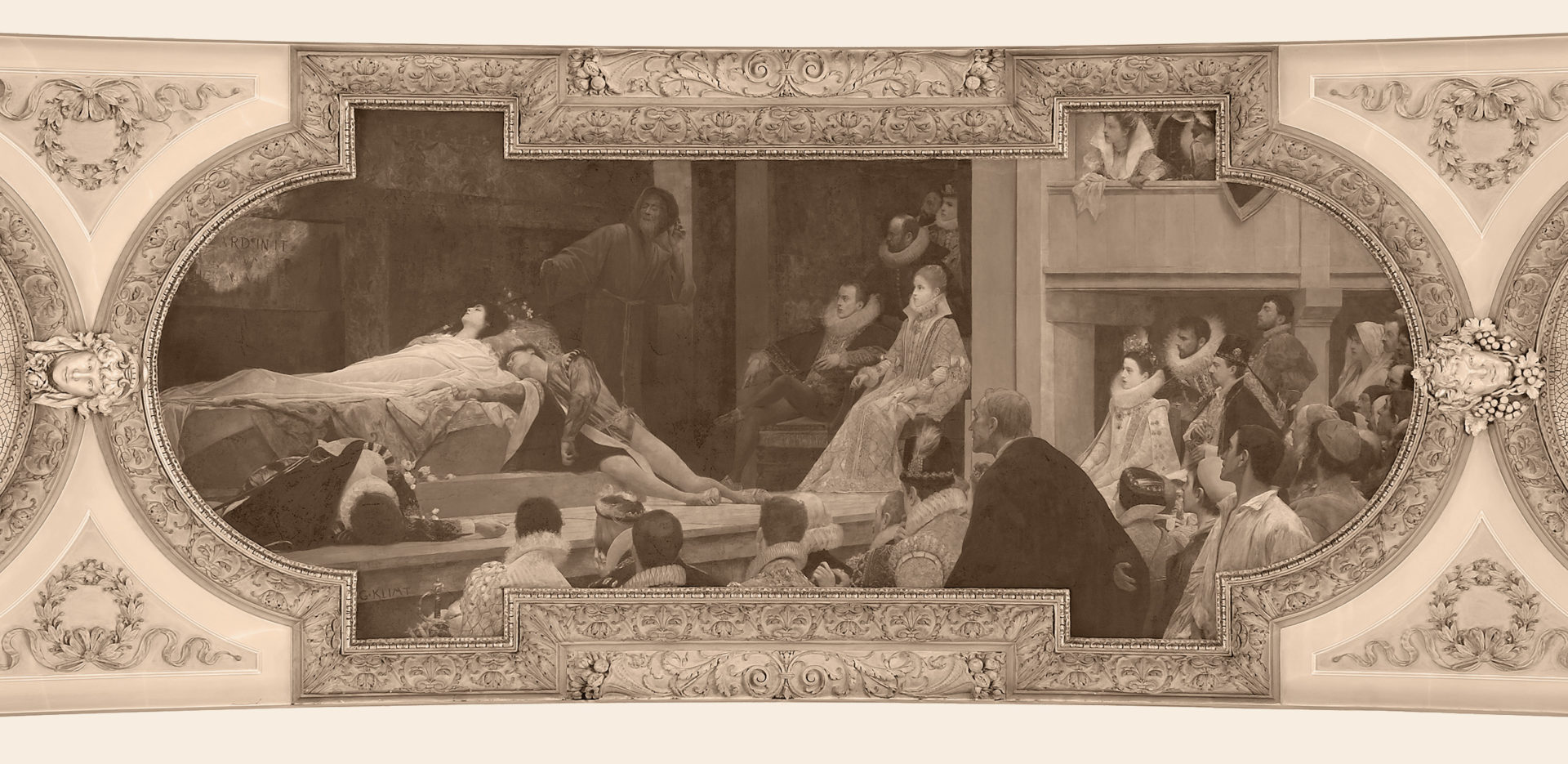 Gustav Klimt, Globe Theater with portraits of three painters (right), Burgtheater, Vienna, 1886 - 1888
Gustav Klimt, Globe Theater with portraits of three painters (right), Burgtheater, Vienna, 1886 - 1888
The Klimt brothers’ and Franz Matsch’s Atelier
Gustav Klimt comes from a humble family from a Viennese suburb. He met his colleague Franz Matsch at the School of Arts and Crafts of the Austrian Museum of Art and Industry (Kunstgewerbeschule des Österreichischen Museums für Kunst und Industrie), founded in 1867 to train craftsmen. Their close friendship expanded to professional collaboration soon also joined by Gustav’s younger brother Ernst, who enrolled in the school a year later.
The three students worked together on several commissions on the recommendation of their professors and after completing their studies in 1883 and moving into their first studio, they were informally known as the Compagnie. In official correspondence and in the press, the artists were referred to by their own names or as the Klimt Brothers’ and Franz Matsch’s Atelier (Atelier Gebrüder Klimt und Franz Matsch), which was formally active until the untimely death of Ernst Klimt in 1892.
Young painters relied on the style of their mentors to suit the taste of the time, and as professional decorators they subordinated their allegorical paintings to the laws of architecture according to the principle of historicist Gesamtkunstwerk (a work of art created by combining several artistic mediums). Although we would very much like to come across a written trace that would indicate that all three or at least one of the painters came to Rijeka, for the time being there is no such evidence. It is therefore assumed that they did not leave Vienna, nor did they attend the installation of their paintings in the lavish stucco frames. Gustav Klimt’s three allegorical representations in Rijeka indicate a departure from his earlier achievements within the framework of academic historicism and transition to Secession stylization and symbolism with an emphasis on his individual approach. In their artistic development, the paintings in Rijeka signify professional maturity of the three young artists, which opened the way to even more demanding commissions.